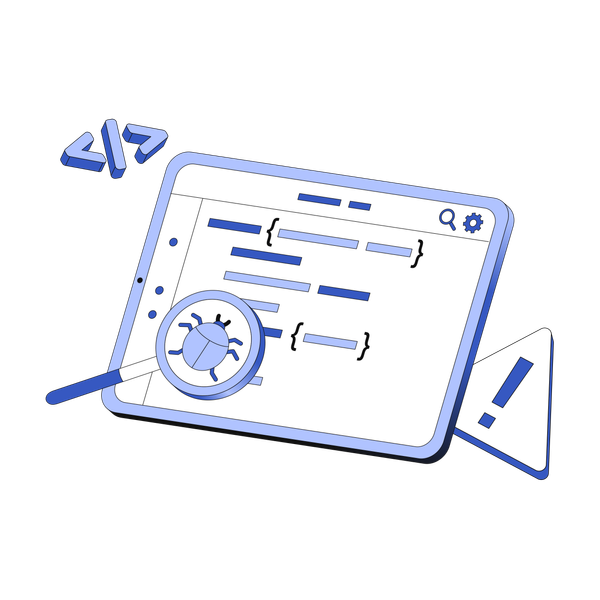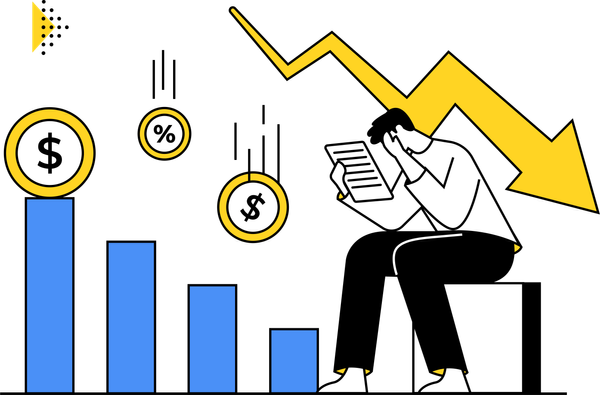Game Marketing Debugging: Why Awareness Is the First Metric to Fix
Boost your game’s marketing success by fixing awareness first. Learn why impressions drive interest, wishlists, and conversions. Discover proven strategies to generate awareness through social media, ads, influencers, and PR. Debug your marketing funnel like code and maximize your game’s reach.

For almost all problems in the promotion phase of game marketing, the metric to look at first is your awareness, because if there is no awareness, it will be very difficult to correctly assess anything else going wrong with promoting your game.
This article is part of a series of articles on how to debug various aspects of your marketing funnel but with a slight twist. We talk about addressing marketing issues for your game the same way you debug your code when programming, and once you know what to look for, solving your marketing issues is quite easy to figure out.
At Glitch, we do data-driven game marketing and in the article, we are going to teach you the importance of awareness, how much awareness you need to start debugging your marketing, and ways to generate more awareness for your game.
The Importance of Awareness
Awareness exists at the top of your marketing funnel, and it will power the remaining stages of interest, evaluation, and conversion. The reason being that if a potential user does not know your product exists, they will never have the opportunity to evaluate your game.
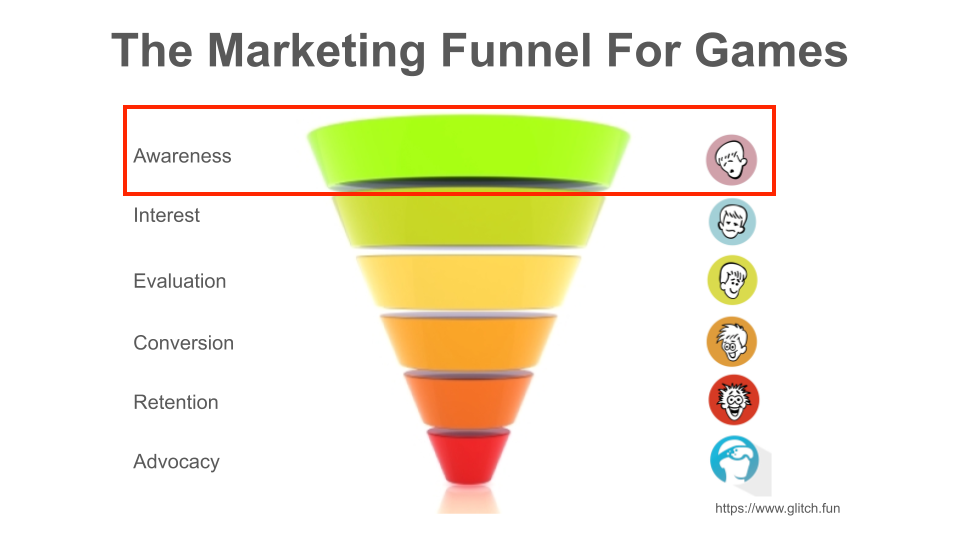
We wrote this whole article why awareness is not a vanity metric. But when we talk about awareness, we will use interchangeable terms such as views or impressions. You may refer to it as:
- Here is the number of views on my X/Twitter post
- Here is the number of plays on my TikTok video
- Here is the number of impressions on my ad campaign
All of these mean that someone, at the very least, saw your content, and if they saw your content, they had the opportunity to engage with it. So let’s work through the marketing funnel backwards to understand why impressions are important.
- Conversion: Conversions are when a user purchases or installs your game. Conversions are typically 10% of your wishlist.
- Evaluation: Evaluation is basically when someone has wishlisted your game. On the high end, 15% of people who see your game end up wishlisting.
- Interest: The interest stage is when people engage on social media, visit your website, and perform other light actions. This might be as high as 10% of people who become aware that the game exists.
So if 1,000 people saw your game in awareness, at 10% that means 100 people will be interested. From those 100, 15% may wishlist, so that is 15 people. And if 10% convert into an actual sale, that is 1–2 sales. We have this chart below that discusses how awareness (impressions) relates to wishlist installs.
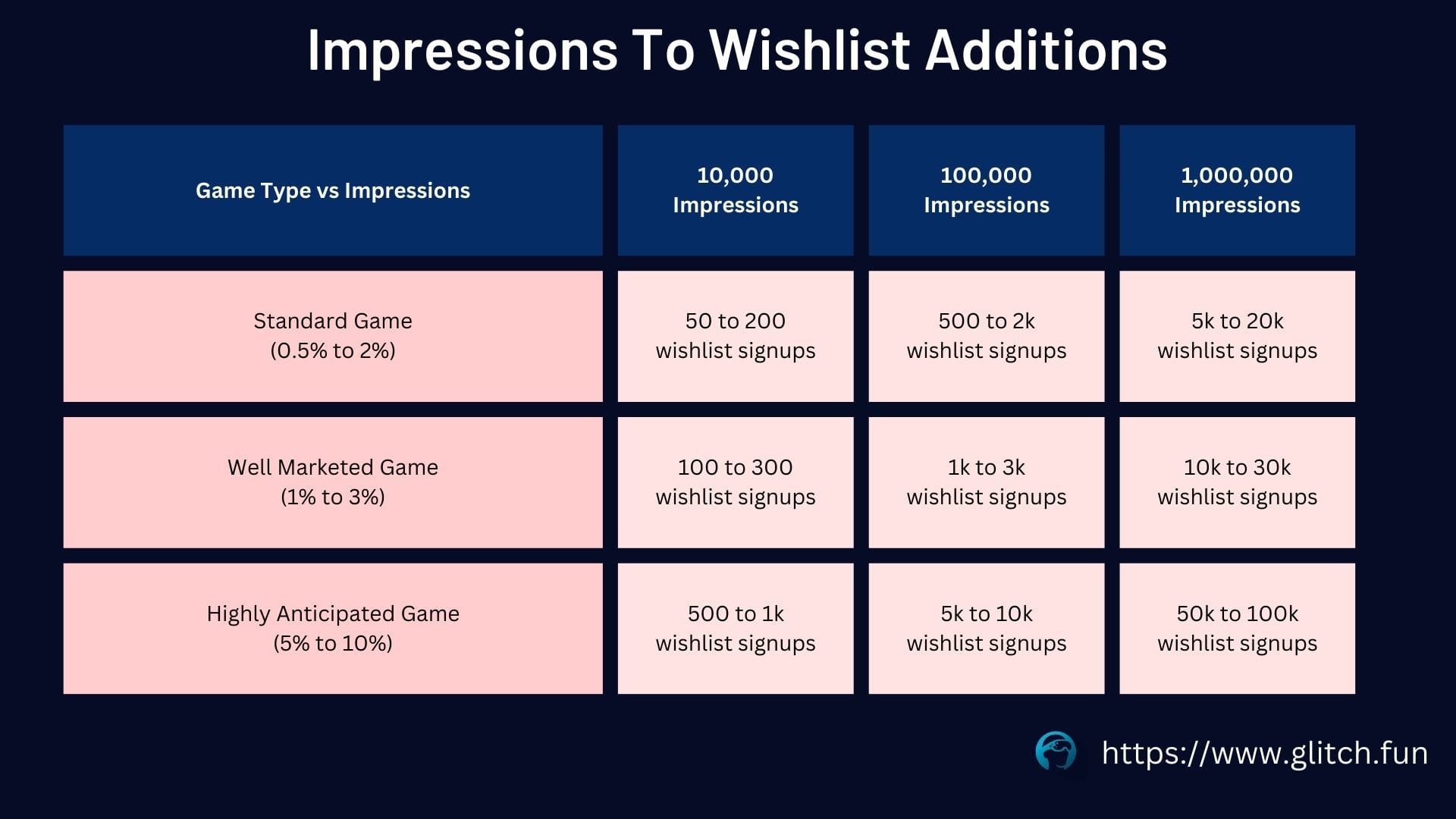
As you follow how the percentages break down at each stage, it becomes obvious why such large amounts of impressions are needed to have a large amount of sales. But what about testing to make sure that what you are marketing is correct? Let’s discuss thresholds below.
Impression Threshold & Statistics
So before we even begin to debug the other stages of the marketing funnel, your impressions have to hit a certain threshold to be meaningful; otherwise, you can draw false conclusions.
For example, imagine a scientist wants to know which ice cream flavor people like the most: chocolate, vanilla, or strawberry. Let’s say they run the following experiments:

- They ask 3 people: 2 say chocolate, 1 says vanilla—far from conclusive.
- They ask 10 people: 3 say chocolate, 3 say vanilla, 4 say strawberry, so now strawberry leads.
- They ask 100 people: 40 say chocolate, 55 say vanilla, and 5 say strawberry. Vanilla is leading.
- They ask 1,000 people: 450 say chocolate, 300 say vanilla, and 250 say strawberry.
Even for something as simple as ice cream, the more people that are asked the better results that will be obtained. Asking to few people can lead to erroneous conclusions. If we really wanted to be technical and accurate, we would use the field of study called statistics, or more specifically Survey Sampling and Inferential Statistics. While we don’t expect you to know all of this, it is still good to know why and our reasoning. In statistics, we have:
- Population Size (N) – The total number of people in the group you want to study.
- Margin of Error (E) – The range within which the true population value is likely to fall (e.g., ±3%).
- Confidence Level (Z) – The probability that the sample accurately reflects the population (e.g., 95% or 99%).
- Standard Deviation (p) – The expected variability in responses, usually set at 50% (0.5) if unknown.
For example, if your game audience has a size of 100,000 people (population), you need a sample size of at least 1,095 respondents to get accurate results with a 95% confidence level and a ±3% margin of error. Some example population sizes for games are:
- Casual & Hyper-Casual Games – 500M–2B people(e.g., Candy Crush, Subway Surfers, Among Us)
- Battle Royale (Shooter/Action) – 100M–500M people (e.g., Fortnite, PUBG, Apex Legends)
- MMORPG (Massively Multiplayer Online RPGs) – 50M–200M people (e.g., World of Warcraft, Final Fantasy XIV, Elder Scrolls Online)
- MOBA (Multiplayer Online Battle Arena) – 80M–200M people(e.g., League of Legends, Dota 2, Mobile Legends)
- FPS (First-Person Shooters) – 100M–300M people(e.g., Call of Duty, CS:GO, Valorant)
- RPG (Role-Playing Games) – 50M–150M people(e.g., The Witcher 3, Skyrim, Cyberpunk 2077)
- Strategy & 4X Games – 20M–100M people(e.g., Civilization, Total War, Age of Empires)
- Sports & Racing Games – 50M–150M people(e.g., FIFA, NBA 2K, Forza, Gran Turismo)
- Survival & Sandbox Games – 100M–500M people(e.g., Minecraft, Rust, Ark: Survival Evolved)
- Simulation & Tycoon Games – 50M–200M people(e.g., The Sims, Cities: Skylines, Stardew Valley)
- Indie & Narrative-Driven Games – 10M–50M people(e.g., Hades, Celeste, Hollow Knight)
- Fighting Games – 10M–50M people(e.g., Street Fighter, Mortal Kombat, Super Smash Bros.)
With these large populations, what is the sample size you need for your game to start making decisions? Just 10k. Not as high as you thought right? Check out this chart below:

Here is how to read this chart - if the population was only 100 people and you wanted a 95% confidence rate with a 5% error, you need a sample size of 80 people.
If your games population size is 50 million people, and you wanted a 95% confidence rate with a 5% error, your sample size should be 9,602 people. Or we just like to round it 10k people.
The point we are trying to convey is the need for a good amount of people to validate results. So when developers come to us and say “I am not getting any wishlists or installs,” and they only have 500 impressions or views, their sample size is too small. Once you hit a good threshold, then we can determine and debug things like:
- You might be targeting the wrong audience.
- Your call to action is non-existent or weak.
- Your landing page might need re-working.
- And a bunch of other problems we will address in other articles.
So how do you get 10,000 views to test results?
How To Generate Awareness
If you have low awareness, the first thing you need to do before debugging other areas of your marketing funnel is to create more awareness. There are a variety of activities you can do to solve this, such as:
- Create More Content On Social: Post more content on socials such as Instagram, TikTok, Reddit, etc. Lower follower sizes mean you will have to post more. Optimize your hashtags and create content types to maximize exposure. At Glitch, we do have an automated social media scheduler that has for several clients generated over 100k organic impressions a week.
- CPM Paid Advertising: If you have a budget for paid campaigns, then you want to run campaigns for brand awareness or CPM (Cost Per Milli). This is where you pay for the amount of exposure your content is given.
- Inbound Traffic Activities: Do more activities that create inbound traffic such as SEO optimization and content marketing.
- Influencers: Get influencers to post about your content. This can be done both for free and paid. At Glitch, we do offer an influencer program.
- Email Campaigns: If you have their email address, then run email marketing campaigns to drive awareness.
- PR: Engage in some PR to get people to write about your game in publications, blogs, and podcasts.
These activities must be done consistently over a period of time, at least one month, to start generating some meaningful results. As you are executing campaigns to generate awareness, there is one key thing you must have in play to make it all worth it, and that’s the analytics.
Turn On Your Analytics
Now, for awareness to have any meaningful impact, the most important and critical thing you need to do is turn on or implement analytics for all your assets. Almost every social media platform has the ability to enable your account as a business or creator account. Turn this feature on.
On your website, implement tools such as Google Analytics. If you are a user of a service such as LinkTree, their upper packages offer analytics as well. All your assets need to have analytics so that you can gain an understanding of the awareness your game is producing.
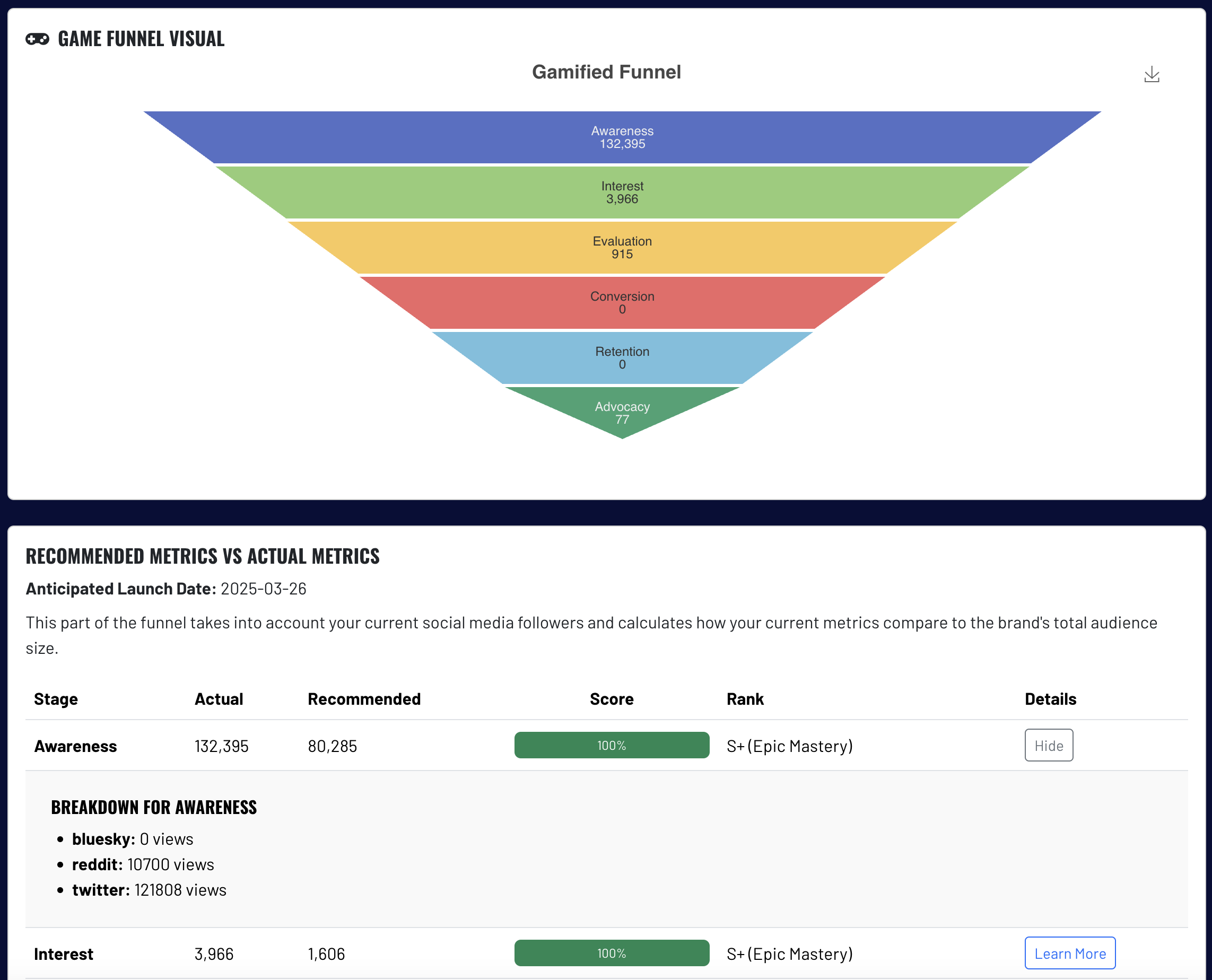
At Glitch, we bring all those statistics together under one platform so you can easily assess how much awareness you are creating on each platform. This will allow you to know if you are creating enough awareness on each social media platform to validate your findings for other parts of the marketing funnel.
Debugging Conclusion: Why Awareness Is Your Key Starting Point
To wrap it all up, remember that awareness drives everything in your marketing funnel. If nobody sees your game, nobody can possibly engage with it, wishlist it, or buy it. That’s why building robust awareness metrics and ensuring you have enough impressions are crucial first steps before you begin tuning other parts of your funnel.
Whether it’s posting more on social media, running CPM ads, working with influencers, or refining your analytics, the strategies you choose will only pay off once you’ve established a solid foundation of awareness. So start by increasing those impressions, measure the results diligently, and watch how it impacts every other stage—from interest to evaluation and finally to conversion.


